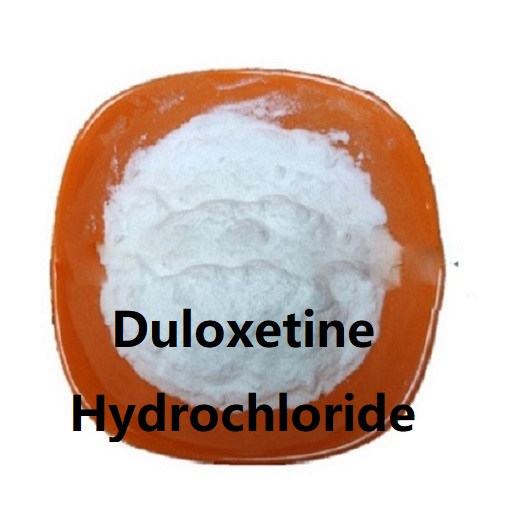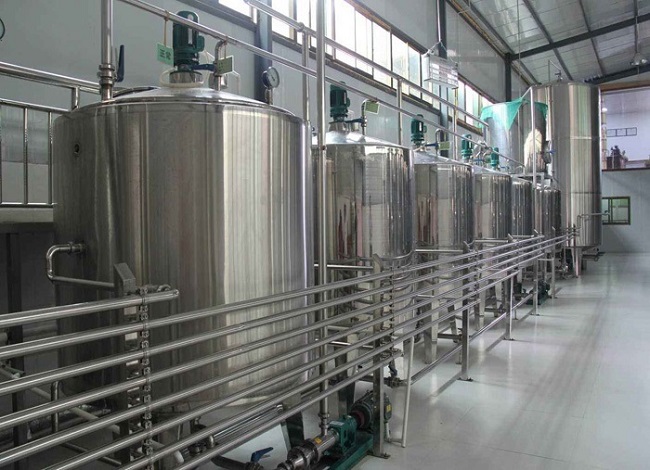Duloxetine Hydrochloride Has Antidepressant Effects.
Duloxetine hydrochloride as an antidepressant duloxetine hydrochloride form, successfully developed by eli lilly, pharmacological effects and duloxetine, duloxetine hydrochloride is a new selective serotonin and norepinephrine reuptake dual role of inhibitors, have antidepressant effect, at the same time has inhibitory effect on central pain.
The pharmacological characteristics of duloxetine hydrochloride are that it can inhibit the reuptake of serotonin and norepinephrine by the presynaptic membrane of neurons, but it has a low inhibitory effect on the reuptake of dopamine.

The oral administration of duloxetine hydrochloride enteric capsules was completely absorbed, with an average lag of 2 hours. The drug began to be absorbed, and the maximum plasma concentration of duloxetine was reached 6 hours after oral administration. Eating does not affect, but will delay the peak time of 6 to 10 hours, slightly reduce the degree of absorption, about 10%. Duloxetine absorption lagged by 3 hours and apparent elimination increased by 1/3 when taken once in the evening compared with once in the morning. The apparent distribution volume is 1640L. Duloxetine has a high affinity for human plasma proteins, mainly binding to albumin and α-acid glycoproteins. The presence of drug interactions between duloxetine and other high protein-binding agents has not been evaluated; hepatic or renal insufficiency does not affect plasma protein binding of duloxetine. Metabolism and excretion: C14-labeled Chemicalbook duloxetine was administered orally to determine in vivo bioconversion and degradation. Duloxetine in plasma accounted for only 3% of the total radiomarkers, suggesting that duloxetine was widely metabolized and had many metabolites. The main bioconversion pathways of duloxetine include naphthalene epoxidation after binding and further oxidation. Both CYP2D6 and CYPIA2 can catalyze naphthalene epoxidation in vitro.

Metabolites in plasma include 4-hydroxyl duloxetine conjugated with glucuronic acid and 5-hydroxyl 6-methoxyl duloxetine conjugated with sulfuric acid. A variety of other metabolites have been isolated in urine, some occurring only in small abrogated metabolic bypasses. Only a small amount of unmetabolized duloxetine hydrochloride protoform is present in the urine (about 1% of the oral dose), and the majority (about 70% of the oral dose) is excreted in the urine as duloxetine hydrochloride metabolite, with about 20% excreted in the stool.
Duloxetine hydrochloride enteric capsule was completely absorbed with an average lag of 2 hours. The drug was absorbed and the maximum plasma concentration (Cmax) was reached 6 hours after oral administration. Feeding did not affect Cmax, but delayed the time to peak by 6-10 hours and slightly reduced the degree of absorption by about 10%. Duloxetine absorption lagged by 3 hours and apparent elimination increased by 1/3 when taken once in the evening compared with once in the morning. The apparent distribution volume is 1640L. Duloxetine has a high affinity for human plasma proteins (> 90%), mainly bound to albumin and α-acid glycoprotein.

The presence of drug interactions between duloxetine and other high protein-binding agents has not been evaluated; hepatic or renal insufficiency does not affect plasma protein binding of duloxetine. Metabolism and excretion: C14-labeled Chemicalbook duloxetine was administered orally to determine in vivo bioconversion and degradation. Duloxetine in plasma accounted for only 3% of the total radiomarkers, suggesting that duloxetine was widely metabolized and had many metabolites. The main bioconversion pathways of duloxetine include naphthalene epoxidation after binding and further oxidation. Both CYP2D6 and CYPIA2 can catalyze naphthalene epoxidation in vitro.

Metabolites in plasma include 4-hydroxyl duloxetine conjugated with glucuronic acid and 5-hydroxyl 6-methoxyl duloxetine conjugated with sulfuric acid. A variety of other metabolites have been isolated in urine, some occurring only in small abrogated metabolic bypasses. Only a small amount of unmetabolized duloxetine hydrochloride protoform is present in the urine (about 1% of the oral dose), and the majority (about 70% of the oral dose) is excreted in the urine as duloxetine hydrochloride metabolite, with about 20% excreted in the stool.













